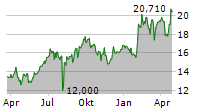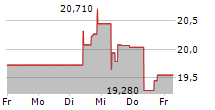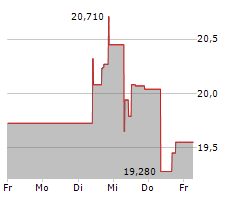

Contributing to the stabilization of millimeter-wave communications in obstacle-laden environments
TOKYO, June 17, 2024 - (JCN Newswire) - NEC Corporation (NEC; TSE: 6701) has successfully developed and demonstrated a radio-over-fiber system with a 1-bit fiber transmission method making it possible to affordably build stable millimeter-wave communication networks for Beyond 5G/6G. By utilizing this method, high-frequency analog signals can be transmitted using an inexpensive electrical-to-optical converter for general-purpose digital communications, thereby enabling the realization of a compact distributed antenna unit at low cost. As a result, a stable millimeter-wave communication environment can be inexpensively achieved in high-rise buildings, underground malls, factories, railways, indoor facilities, and other obstacle-laden environments. NEC will be presenting its results at the IEEE MTT-S International Microwave Symposium (IMS2024) starting on June 16 (local time) in Washington, D.C.
 |
| Figure 1. Millimeter-wave mobile network utilizing a radio-over-fiber system |
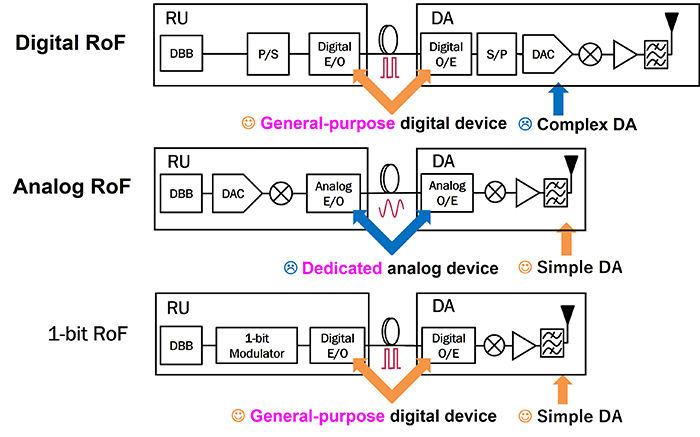 |
| Figure 2. Types of radio-over-fiber systems |
 |
| Figure 3. Proposed 1-bit radio-over-fiber system |
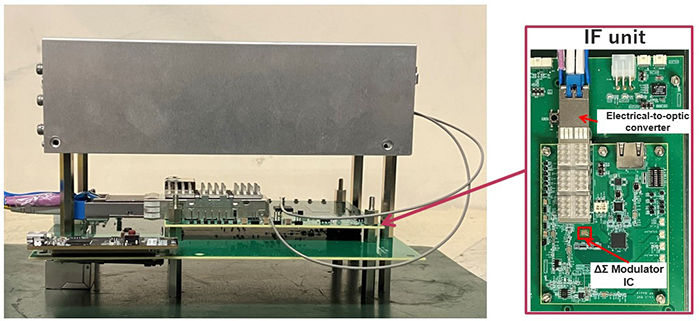 |
| Figure 4. 40-GHz band distributed antenna unit |
Development background
High-speed wireless communications leveraging millimeter-wave technology are expected to be a key technology for Beyond 5G/6G. In particular, since approximately 80% of mobile communication traffic occurs indoors, millimeter-wave is being considered as an indoor solution. However, since there is significant propagation loss and high linearity in the millimeter-wave frequency band, it is imperative to ensure line of sight between base stations and terminals to achieve sufficient quality of service (QoS). While dense installation of distributed antenna units (DA) for direct transmission and reception of data with terminals and avoiding obstacles is known to be effective in resolving these issues, the size, power consumption, and cost of installing the required number of DA have proven to be major issues. To overcome these issues, NEC developed a radio-over-fiber system (RoF) and a related transmission method.
Issues surrounding conventional RoF systems and approaches to resolving them
As shown in Figure 2, conventional RoF systems are categorized as digital RoF systems (digital RoF) and analog RoF systems (analog RoF). With digital RoF, digital signals generated in the radio unit (RU) are transmitted to the DA over fiber. Since DA used in digital RoF must be equipped with a device for processing digital signals (i.e., digital signal processor; DSP) and a digital-to-analog converter (DAC), both power consumption and costs are high. Meanwhile, analog RoF uses a method with which high-frequency analog signals are generated in the RU and transmitted to the DA over fiber. With analog RoF, configuration is simplified since DA are not required to be equipped with DSP or DAC, however, a dedicated converter with high linearity for analog signals is required for the electrical-to-optical converter. This in turn drives up device costs. NEC therefore set out to develop a 1-bit fiber transmission method and a 1-bit RoF system (1-bit RoF). The 1-bit fiber transmission method converts high-frequency analog signals into 1-bit pulse signals that are transmitted over fiber, and the desired analog signal can be reproduced through a filter. For 1-bit RoF using this method, an affordable general purpose electrical-to-optic converter for digital communications can be utilized, as is the case with digital RoF. At the same time, like analog RoF, there is no need for the DA to be equipped with DSP or DAC. As a result, 1-bit RoF is a system that combines the advantages of digital RoF and analog RoF.
Initiatives to realize the 1-bit RoF system
Developing a 1-bit modulator with a high signal-to-noise and distortion ratio (SNDR) for converting signals into 1-bit pulse signals has been a challenge in the practical application of 1-bit RoF. NEC, therefore, developed a vector decomposition method (*1) that has a superior SNDR as a 1-bit fiber transmission method for downlink traffic. Also, for uplink traffic, NEC developed a digital reproduction method that cancels signal distortion generated by 1-bit fiber transmission and regenerates the original signal. As a result, NEC succeeded in suppressing the degradation of the SNDR during 1-bit fiber transmission in both downlink and uplink directions.
In addition, to confirm that the newly developed 1-bit RoF system conforms to mobile communication standards, NEC developed a new radio-over-fiber prototype (*2) for the 40 GHz band consisting of an RU and a compact DA. Verification test confirmed the system's compliance with the standards (*3).
The newly developed system makes it possible to install compact, low-cost DAs in high density. In addition, it is expected to improve the millimeter-wave communication environment by ensuring the line of sight between DAs and terminals.
Future prospects
NEC developed a 1-bit fiber transmission method enabling a compact millimeter-wave distributed antenna, low power consumption, and cost reduction. The radio-over-fiber system applying this method enables inexpensively building stable millimeter-wave communication networks in high-rise buildings, underground malls, factories, railways, indoor facilities, and other obstacle-laden environments. It will therefore promote the uptake of high-speed and large-capacity communications using millimeter waves for Beyond 5G/6G. Going forward, NEC will continue to develop high-speed and high-capacity technologies for Beyond 5G/6G.
Scheduled presentation
These results will be presented at the session on Photonic-Enabled Systems and Solutions at the IMS2024, which is being held from June 16 (local time) in Washington, DC, with the title "1-bit Digital Radio-over-Fiber System with Hybrid Architecture for 40-GHz Band."Presentation date and time: June 18, 2024; 8:40 AM (local time)Title: 1-bit Digital Radio-over-Fiber System with Hybrid Architecture for 40-GHz BandConference website: https://ims-ieee.org/
Acknowledgments
This research includes results from Japan's Ministry of Internal Affairs and Communications (MIC) "Research and Development for Expansion of Radio Wave Resources' program (JPJ000254).
(1) Vector decomposition method: A method in which a radio signal is decomposed into two signals with a constant amplitude. It is also known as the outphasing method
www.nec.com/en/global/techrep/journal/g23/n01/230110.html
(2) To achieve a compact DA, NEC developed a modulator IC capable of operating at 5 Gbps as a 1-bit modulator for uplink using a general-purpose CMOS process. The size of the IC is 2 x 1.5 mm.
(3) Compliance with 3GPP standards was verified through Over the Air (OTA) measurements.
About NEC Corporation
NEC Corporation has established itself as a leader in the integration of IT and network technologies while promoting the brand statement of "Orchestrating a brighter world." NEC enables businesses and communities to adapt to rapid changes taking place in both society and the market as it provides for the social values of safety, security, fairness and efficiency to promote a more sustainable world where everyone has the chance to reach their full potential. For more information, visit NEC at https://www.nec.com.
Media Contact:
7-1, Shiba 5-chome,
Minato-ku, Tokyo 108-8001
Japan
Phone: +81-3-3454-1111
Source: NEC Corporation
Copyright 2024 JCN Newswire . All rights reserved.
© 2024 JCN Newswire

